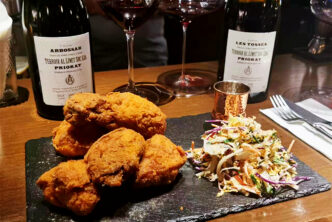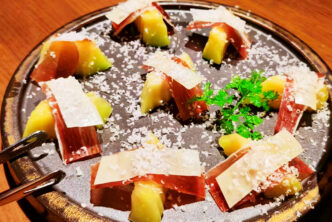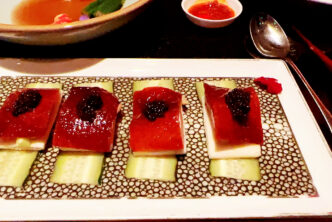Amaya Grill & Bar
Halkin Arcade, Off Lowndes St
London SW1X 8JT, United Kingdom
Tel. +44 2078231166
The dishes
Tandoori oven wild shrimp
Wild venison seekh kebab
Smoked chili lamb chops
Tamarind glazed Chilean seabass
Seasonal lamb curry
The wines
Hambledon NV Classic Cuvée Rosé Hampshire English Sparkling Wine 89
Lyme Bay 2021 Bacchus Devon United Kingdom 92
Clos des Papes 2018 Châteauneuf-du-Pape Rouge 94

One of London’s finest Indian restaurants, I have never had a bad meal at Amaya. It is a place I try to make my way to more often than not whenever I’m in Albion’s capital. Opened in 2004, and Michelin-starred since 2006, it’s safe to say I’m not the only one who thinks Amaya is just swell, at least by judging from how packed it is most nights. And also by judging the slew of other awards (besides stars) it and its sister restaurants have garnered over the years: co-owned by Ranjit Mathrani, Amaya (winner also of Best Restaurant & Best New Restaurant – London Restaurant Awards) is part of the MW Eat group, along with Chutney Mary (Best Indian Restaurant – London Restaurant Award); Veeraswamy (Britain’s Oldest Indian Restaurant, established 1926); and Masala Zone (Best High Street Chain – BBC Olive Magazine).
Located in the ultra-chic Knightsbridge area of London, the crowd that frequents Amaya is also fairly chic and well-heeled, and blends in well with the just as chic Amaya atmosphere: the warm glow of low lighting but rich colours, hovering mostly in the orange, red and black ranges; the spectacular theatrical open kitchen that boasts three different Indian grilling techniques; and a veritable army of servers (honestly now, I counted about twenty-four of them on the night I was there, if you can believe it, and I probably missed a few). Almost more art gallery than dining spot in the first-glance impression it casts, Amaya’s large space is so well decorated and designed that it feels anything but cavernous. In fact, everything at Amaya, including the food and wine, is about a quiet luxury, one that is not ostentatious but refined, like it’s the most normal of things (in this social media-driven day and age, it isn’t); and you find yourself leaving at meal’s end having not just had a great meal, but a great time too. Such a nice time that you’ll be thinking about the food, service and wine long after you’ll have stepped out of Amaya’s doors, while all the while thinking when you can go back next. The place is really that good.
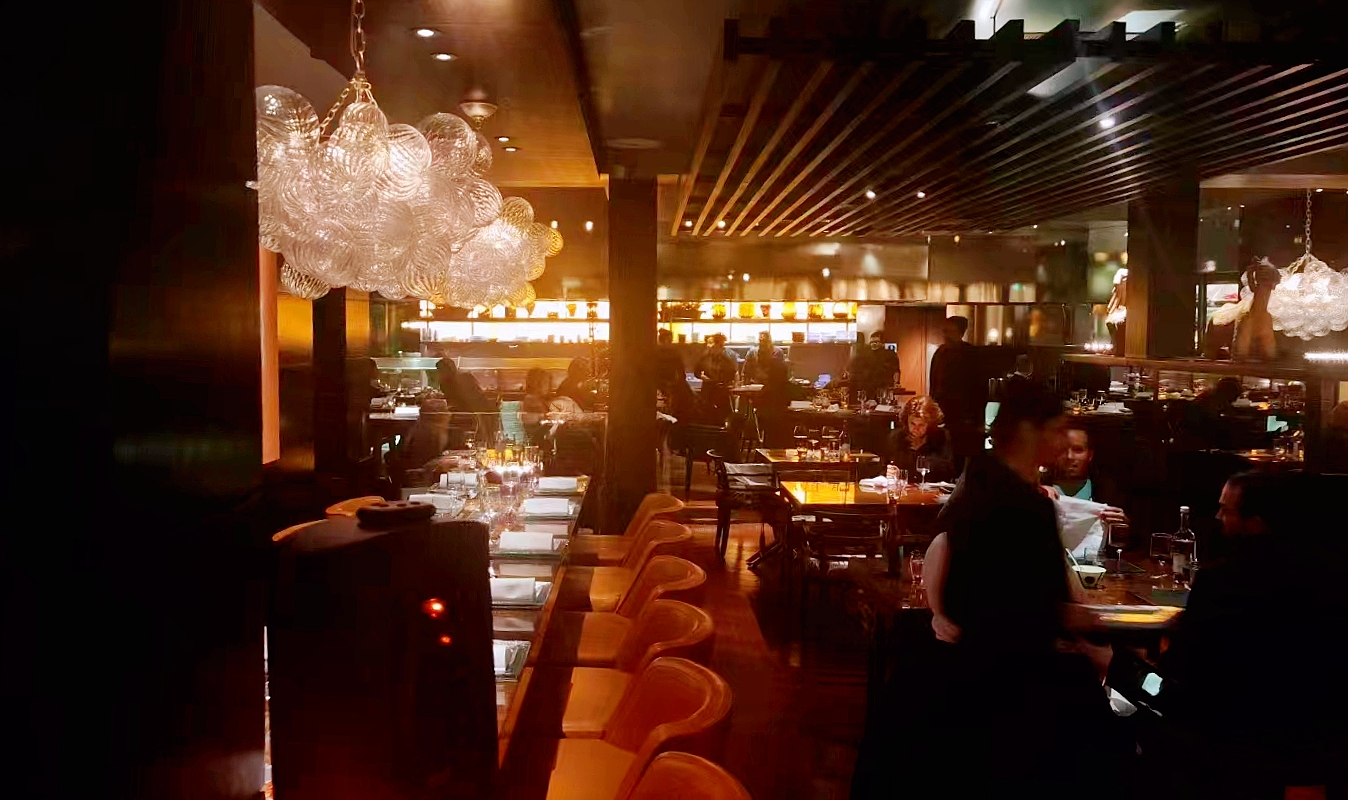
Clearly, for all that to come true, you have to like Indian food. But at Amaya the cooking is so precise and clean that even those not normally ethnic food-inclined usually come away having greatly enjoyed the experience. The food is certainly aromatic: almost all the meats, fish and vegetables served are marinated to a degree with mixes of the country’s many spices. In fact, though we speak generically of an “Indian cuisine”, there is no such thing (just like there is no Italian or Mexican cuisine). Rather, it’s all about the different cuisines of India’s many regions. Amaya’s obviously sophisticated style translates to its food too, with aromas and flavours that are not so strongly pungent that they might risk turning off those not so in tune with Asian cooking. An indication of spiciness on the menu next to the various dishes also helps you avoid choosing unwisely and having to then implore for a fire extinguisher. For sure, Amaya’s chefs have a delicate hand in the kitchen, thereby allowing the quality of the ingredients (which is immediately recognizable as noteworthy, another Amaya plus) to shine through on your plates. To that extent, grilling as a cooking technique allows aromas and flavours to reach your table in fairly unadulterated form. At Amaya, you can choose between food grilled with the sigri (a charcoal grill), the tawa (a very large griddle) and /or the better-known tandoor oven. Even better, Amaya has perfected the concept of table sharing and food grazing at the table: the dishes all come in two or four pieces, such that curious restaurant-goers can plan and try as many different dishes from the vast spectrum of regional cuisines on offer. Amaya’s food isn’t completely, authentically, Indian (meaning it doesn’t follow old recipes to the letter), but presents rather a revamped, more modern take, one that has made Amaya’s fame and fortune. It’s all close enough to the original so as to not disappoint those looking for an authentic Indian eating experience, but thrust enough into the present and future that the coolest patrons won’t feel like they’re wasting their time because of a rising “been there, done that” feeling. A very good example of Amaya’s innovative approach to its cooking is the downright excellent venison seekh kebab, sausagy-looking cylinders that are delicately spicy and smoky but above all very flavourful (they actually do taste of deer) but are lifted and lightened, read “modernized”, by a delicate red bell pepper creamy stuffing. I gobbled my two down and I swear I could have had another six or eight easily. Note that the breads (complicated by nuances of garlic and black truffle) and the curries are also exceptional at Amaya. In general, I think the meats are the real strength of Amaya’s kitchen, but to be clear, I loved (and love) all the seafood dishes I have and have had here too.

Amaya’s wine list is eclectic: there are many wines from all over the world to choose and prices vary greatly, but it’s fair to say it will offer something for everyone, especially the well-chosen wines available by the glass. I think at Amaya they could make a bigger effort with their selection of aromatic grape wines (Riesling, Grüner, Torrontes, Kerner, Muscats, Malvasias…) as these are the wines that pair best with most of Amaya’s food. On the one hand, I find Amaya does a commendable job of not just loading up on the best-selling, high-earner stuff such as Burgundies and New World Chardonnay wines (though there really are quite a few of those), but on the other besides the three or four excellent wines made with mildly to moderately to very aromatic grapes available by the glass (Grüner, Riesling, Viognier, Albariño, Bacchus) it strikes me as a little disheartening, strange really, not to have a single Gewurztraminer (more than one, really), dry to semi-sweet Muscat wine or Torrontes on the list. Heck, what do I know, but I think I’d add a few more Riesling wines from different countries too. These grapes make wines that go far better with Amaya’s food than does any Chardonnay wine, though I understand fully well that restaurants have to stay in business and offering currently uncool wines such as Gewurz (that people might not want to buy) may be a difficult thing to do. Then again, that’s what well-trained and capable sommeliers are for: and besides, if a restaurant like Amaya doesn’t give that noble grape a spotlight, then who will? That neutral potables don’t get much mileage at Amaya is well-demonstrated by the signature cocktails, studied so that they highlight the smoky intensity of much of Amaya’s cooking, while offering a touch of sweetness (always good with grilled foods, as any amateur chef knows well). And so concoctions in which passionfruit and chili pepper share the spotlight are de rigueur at Amaya, and so they should be. But to be clear, I repeat that Amaya’s wine list is more than fine (for example, the red wine choices, loaded with Grenaches and Pinot Noirs and mostly devoid of tannic behemoths are spot on): I especially liked the thoughtful choice of including a few good, diverse, English wines (both still and sparkling): I had a lovely English Bacchus wine, for example. I mean, if you are dining in London, then it is only reasonable to expect that a small selection of such local potables find their way on the wine list, so well done!
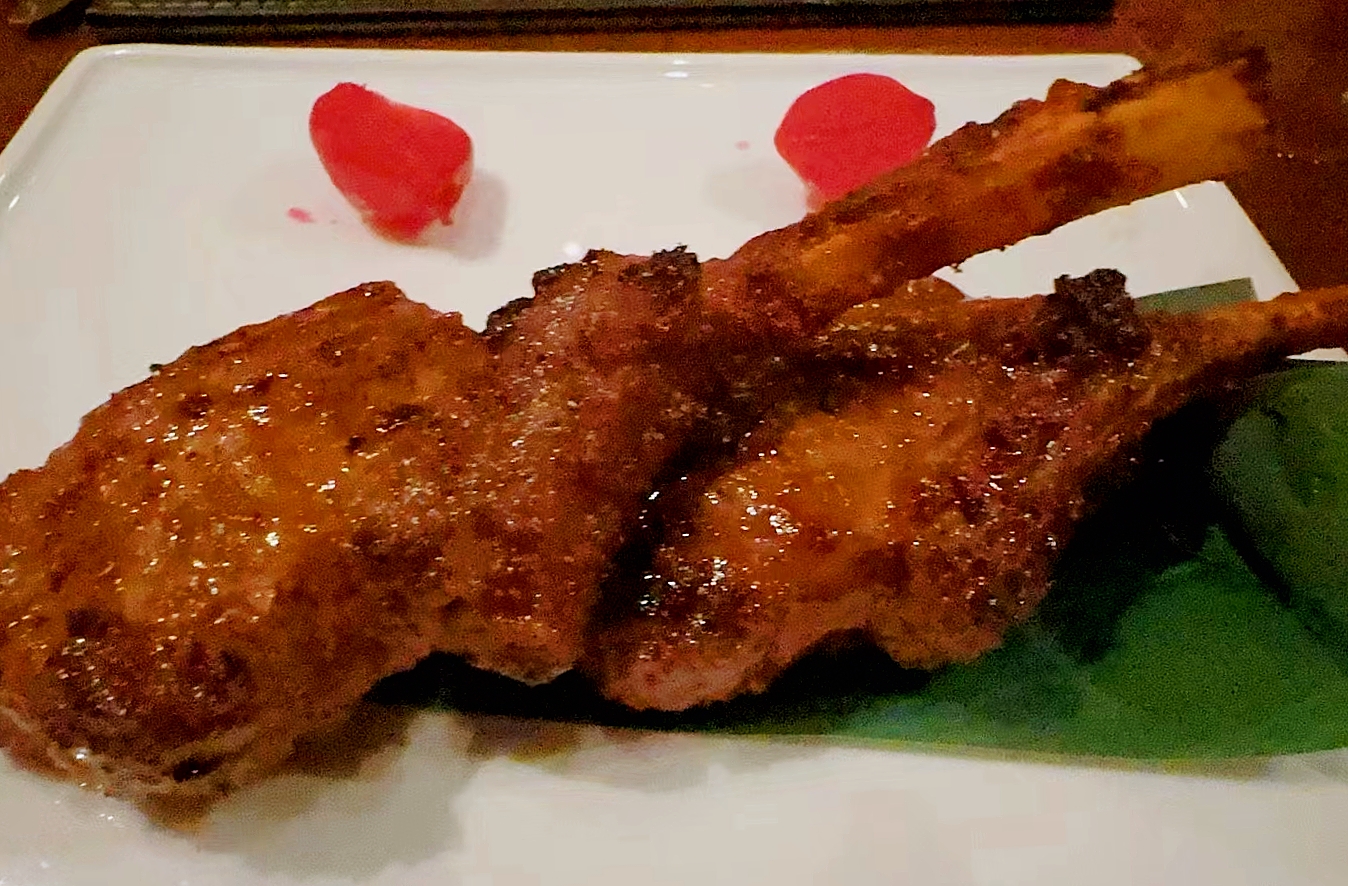
Ad to show you that I purt my money where my mouth is, on this night I chose a couple of glasses of an English bubbly and an English Bacchus (both excellent) and a spicy red from the Rhône: notice a theme here? Of course there is, and yes, you should notice it too. All three made the food that much more enjoyable, and our evening too. The Hambledon NV Classic Cuvée Rosé Hampshire English Sparkling Wine was an uncomplicated, serviceable and genteel way of starting dinner, with its rising nuances of red apples and flowers. This Chardonnay-led blend (86%) has 14% Pinot Noir and its bright acidity serves it well in its aperitif function. But it was the wine that followed, the Lyme Bay 2021 Bacchus Devon that was lights out. Bacchus is a grape crossing (much like are Müller-Thurgau and Pinotage), obtained in 1933 by viticulturalist Peter Morio at the Geilweilerhof Institute for Grape Breeding in the Pfalz by crossing a Silvaner x Riesling cross with Müller-Thurgau. Bacchus has demonstrated very good winemaking potential and was released for general cultivation in 1972. Small volumes of mono-variety Bacchus wine are made in Germany, but it is in the United Kingdom the variety has really found a welcoming home, with a bevy of truly good bottlings available. The variety usually provides a fresh, light-bodied, juicy, fruitier alternative to Sauvignon Blanc’s much more herbal wines, but can also give much richer wines when grapes are slightly late-harvested. At Lyme Bay they tend to do both, depending on the vintage, and my guess is that the 2021 is an example of the former type, without the inclusion of any superripe grapes possibly even hit by botrytis. It’s therefore a very bright and fresh version of Bacchus, with piercing, juicy aromas and flavours of crisp orchard fruit and minty nuances that linger impressively. Beautiful well-balanced, I can see why so many estates have planted this variety in the UK: no matter whether Bacchus wine is made from ripe or superripe grapes, the thing’s so enjoyable it’s going to find fans everywhere. Last but not least, the Clos des Papes 2018 Châteauneuf-du-Pape Rouge from Paul Avril & Fils was delicious and matched heavenly well with the spice-accented fare Amaya is reputed for. Though still very young, the very pure core of Grenache provided ample sweet red fruit and layered flavours that were nicely persistent and forward. Clearly, the absence of noteworthy tannins further accentuated this wine’s ideal food-pairing potential with more or less gently spicy foods.
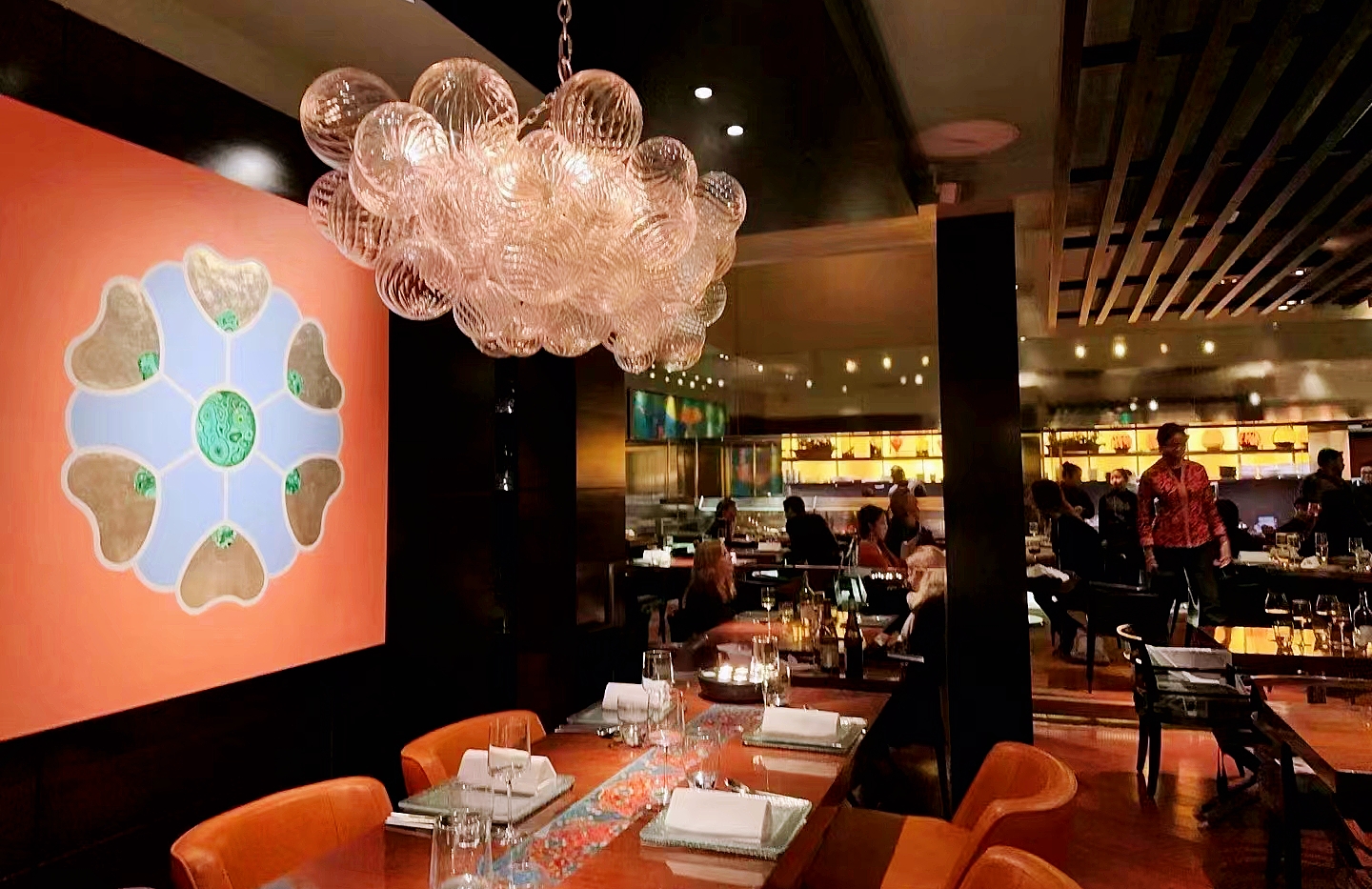
Amaya’s wine, food and unbelievably welcoming, thoughtful service provided yet another very successful dining experience: so successful that on the way back to my hotel, I found myself thinking that it had been quite a few years since I had last visited India. Thanks to Amaya, I might just do something about that sorry state of affairs soon enough. In the interim, I’ll look forward to dining at Amaya again. And again.

 English
English
